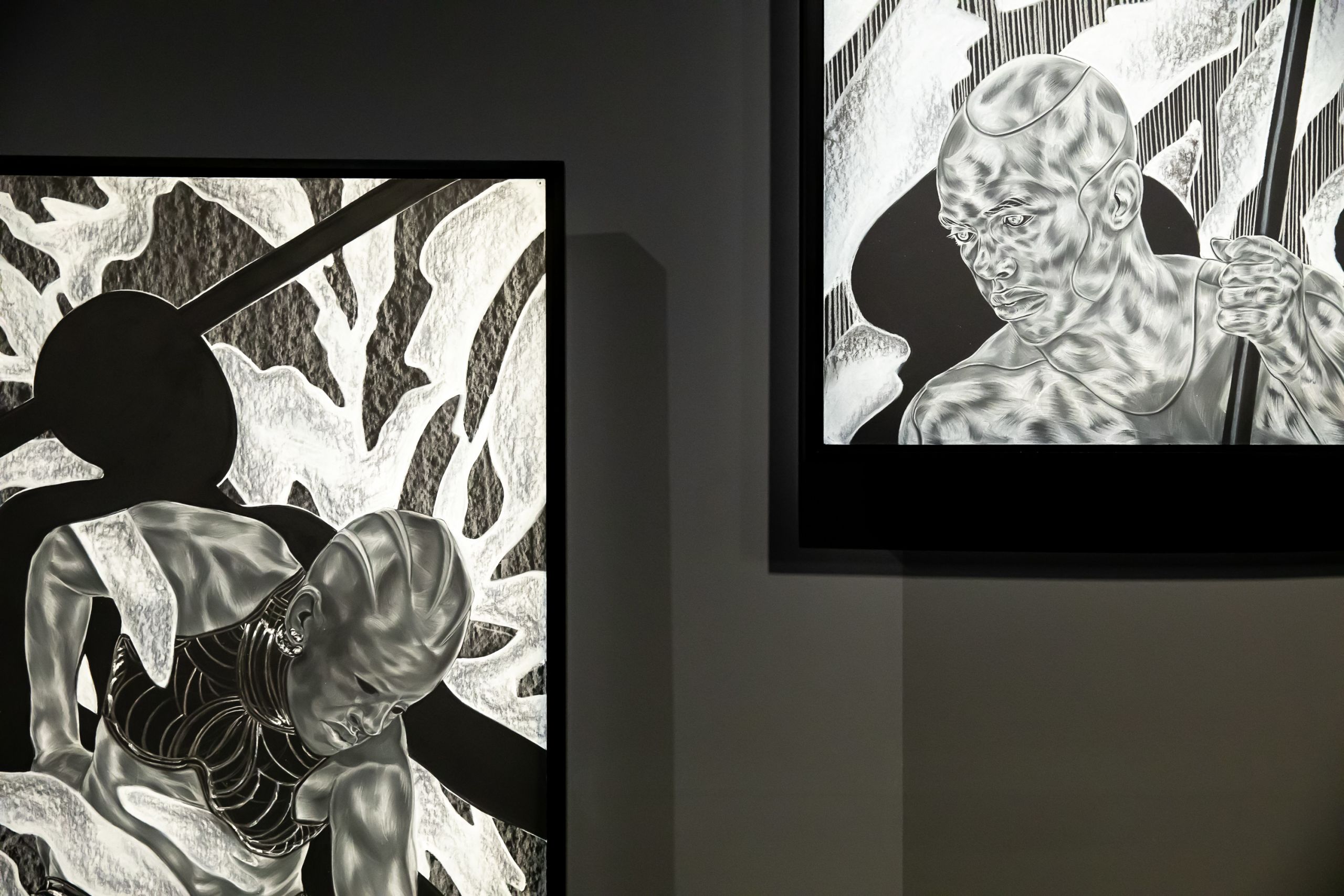A musical maze
Sound artist Peter Adjaye has created an immersive soundscape for our new exhibition in The Curve – the first UK commission for Toyin Ojih Odutola. He tells us just how he worked with her and the space itself, to produce this new installation.

Tell us a bit about your process and how you began composing the sound installation Ceremonies Within. What details did Ojih Odutola share with you before you began composing and how did you use these as starting points for your composition?
The process I use the most is layering. I spent a lot of time speaking with Toyin about her impetus for the artwork that she was embarking on. She had listened to my Dialogues album and particularly loved a track called ‘Darkest Light’.
We shared lot of musical influences in our conversations and discussions which included contemporary classical, spiritual jazz, Japanese ambient, minimalism and indigenous African music.
You use an incredibly diverse range of sounds in your practice, and your Barbican composition is no exception – from classical strings to natural sounds to synths to West African instruments. Can you tell us more about these different elements and what interests you about building a soundscape from such an extensive range of sources?
The soundscape is made up of three main movements and nine sub sections.
This felt like a natural way of dividing the space, and hence the composition, to symbolise the beginning, middle and ending. The first movement is about setting up the landscape in regards to its natural elements with rocks, stones, water, reeds and wind, but also the idea of genesis or the beginning of humankind fused with power and a spiritual presence. The balance of sounds in regards to foreground and background was very important and had to be clear and precise, and yet have a natural flow.
One of the many wonderful surprises in putting this exhibition together with the sound was how the large 7ft drawings on canvas also acted as sound deflectors

The second movement emphasises the underpinning rhythmic pulse of the soundscape, a sort of heartbeat that takes you from a holy sacred place to an ancient outer-worldly place. The transition from the first movement into the second movement is designed to give the feeling of walking through a maze as you interpret your own thoughts in sound. The instrumentation in this movement ranges from gongs and many percussion, to orchestral and strings passages, which combine to challenge the language of minimalism. As you continue through the ‘maze’ into the third movement there is once again a transition that is both nebulous and unpredictable. It is concerned with the tension and drama of betrayal and accusation, which leads to the possibilities of rebirth and future epitaphs. There are metallic West African sounds which are important in their materiality in conveying a material rich new landscape.
You have a particular interest in composing music in response to specific architectural spaces. The Curve is an unusual and cavernous space, which takes you on a winding journey along its 90-metre length. How did you respond to the parameters (and challenges) of this space in creating such an immersive piece?
I specialise in working with so-called difficult acoustic spaces in my ongoing research called ‘Music for Architecture’. I embraced the space and noted the acute acoustic characteristics of The Curve. This led me to request extra curtains plus the inclusion of carpet throughout, which really helped when it came to having different materials in the space that is not all concrete and the same. One of the many wonderful surprises in putting this exhibition together with the sound was how the large 7ft drawings on canvas also acted as sound deflectors in the space as they are purposefully arranged at differing heights, like a rhythmical musical stave.
There are metallic West African sounds which are important in their materiality in conveying a material rich new landscape

The final 12-channel sound installation evolves organically – although it is structured in three movements, the sounds bleed into each other and move with the visitor as they walk through the gallery. Can you tell us about what drew you to create this effect?
The idea of sound ‘bleeding’ from one into the other has been at the heart my creative practice for over the last five years. In this particular example each of the 12 speakers has a different soundscape that works in tandem with the location of the particular movement, so as you meander between these ‘nodes’ you hear the beginnings of new sounds while still hearing sounds from the last ‘scenes’. The listening experience therefore has many permutations depending on the path that you take in the space relative to each speaker in proximity.
'The idea of sound ‘bleeding’ from one into the other has been at the heart my creative practice'

Did anything surprise you when you came to install the soundscape alongside Ojih Odutola’s work in the space? There seem to be particular moments where the narrative unfolding in her drawings resonates in an incredibly powerful, emotional way with specific passages of your soundscape.
It was wonderful to see the many themes and transitions that I had purposefully created in the soundscape come to life in a way that perfectly reflected the feeling and story of the artwork without being regimented and specific to each drawing, evolving and engaging with each other in every corner of the space.
A limited-edition vinyl album of the exhibition soundscape composed by artist Peter Adjaye, Ceremonies Within, will be released on 18 September 2020 on Vinyl Factory Records/Music for Architecture Records. It will be available to buy online and in the Barbican Shop. The album cover features Toyin Ojih Odutola’s work 'Summons, To Witness One’s Own' (2019-20).